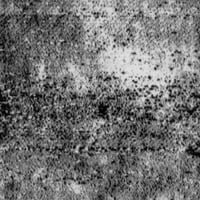kottke.org posts about World War II
How a rough system of barter developed into a more complex system of trade in WWII POW camps. This is fascinating stuff.
We reached a transit camp in Italy about a fortnight after capture and received 1/4 of a Red Cross food parcel each a week later. At once exchanges, already established, multiplied in volume. Starting with simple direct barter, such as a non-smoker giving a smoker friend his cigarette issue in exchange for a chocolate ration, more complex exchanges soon became an accepted custom. Stories circulated of a padre who started off round the camp with a tin of cheese and five cigarettes and returned to his bed with a complete parcel in addition to his original cheese and cigarettes; the market was not yet perfect. Within a week or two, as the volume of trade grew, rough scales of exchange values came into existence. Sikhs, who had at first exchanged tinned beef for practically any other foodstuff, began to insist on jam and margarine. It was realized that a tin of jam was worth 1/2 lb. of margarine plus something else; that a cigarette issue was worth several chocolates issues, and a tin of diced carrots was worth practically nothing.
The cigarette soon became the coin of the realm and at camps with stable populations, there were shops operated by the senior British officer with cigarettes as the currency people used to buy and sell goods to/from the store.
One trader in food and cigarettes, operating in a period of dearth, enjoyed a high reputation. His capital, carefully saved, was originally about 50 cigarettes, with which he bought rations on issue days and held them until the price rose just before the next issue. He also picked up a little by arbitrage; several times a day he visited every Exchange or Mart notice board and took advantage of every discrepancy between prices of goods offered and wanted. His knowledge of prices, markets and names of those who had received cigarette parcels was phenomenal. By these means he kept himself smoking steadily - his profits - while his capital remained intact.
The article also discusses deflation, the shifting availability of currency, credit, price movements, futures markets, paper currency, and price fixing. (via migurski)
Quentin Tarantino’s next movie: Inglourious Basterds. Here’s le plot:
A band of U.S. soldiers facing death by firing squad for their misdeeds are given a chance to redeem themselves by heading into the perilous no-man’s lands of Nazi-occupied France on a suicide mission for the Allies.
According to Ain’t It Cool News, Tarantino will release the movie in two parts, as he did with Kill Bill. (via crazymonk)
A German fighter ace has just learned that one of his 28 wartime ‘kills’ was his favourite author. Messerschmidt pilot Horst Rippert, 88, said he would have held his fire if he had known the man flying the Lightning fighter was renowned French novelist Antoine de Saint-Exupery.
Sometimes truth is stranger than fiction. (via clusterflock)
In a map of the Republik van Nieuw Nederland, Paul Burgess imagines that the Dutch never gave up their New World possessions and a republic formed centered around New Amsterdam.
New Amsterdam never gave way to New York. The Dutch kept the whole of their North American colony out of the hands of the perfidious English, in fact. New Netherland today constitutes a thriving Republic stretching from the Atlantic coast to Quebec, dividing New England from the rest of the United States.
See also Melissa Gould’s map of Neu York, which imagines Manhattan as a post-WWII Nazi possession.
The Überschwerer Kampfschreitpanzer is an awesome but little-known walking tank that was used in the German invasion of Russia during WWII.
As the war progressed, the Überschwerer Kampfschreitpanzers became less of an asset and more of a liability. Their height made it nearly impossible to hide them, and at least one was totally destroyed and another wrecked beyond repair by a concentrated rocket attack from the so-called “Stalin’s Organs.” Several others were damaged from artillery barrages, Russian dive bombers claimed another, and if reports are correct, one of the last Fortresses was taken by several P-38 Lightning pilots, who brought it down with wing-mounted rockets.
Where was this in my high school history book?
Project Orcon was a WWII-era effort to find a non-jammable guidance system for missiles; pigeons were one of the things they tried. Loaded into a missile, the pigeons were to tap on the image of the target to correct the missile’s trajectory.
Trainee pigeons were started out in the primary trainer pecking at slowly moving targets. They were rewarded with corn for each hit and quickly learned that good pecking meant more food. Eventually pigeons were able to track a target jumping back and forth at five inches per second for 80 seconds, without a break. Peck frequency turned out to be four per second, and more than 80 percent of the pecks were within a quarter inch of the target. The training conditions simulated missile-flight speeds of about 400 miles per hour.
More information at Wikipedia, including some interesting see alsos: bat bomb and anti-tank dog. (thx, dan)
We’re running a bit behind in watching The War; we stopped the other night right before D-Day. The series is quite good so far, even with all its flaws. The last section we watched dealt with the Battle of Monte Cassino and the related Battle of Anzio in Italy. With the Germans holding the high ground, these battles were some of toughest of the war for the Allies. During one particularly difficult moment, an American soldier yelled out a prayer (I’m paraphrasing slightly): “Oh God, where are you? We really could use your help down here. And don’t send Jesus, come down here yourself. This ain’t no place for children.”
The New Yorker’s Nancy Franklin pans Ken Burns’ The War.
They’ve taken a subject that is inexhaustible and made it merely exhausting. Scene by scene, interview by interview, the series doesn’t bore, if you are of the school that believes that everyone’s experiences are at least somewhat interesting, and that the experiences of those who went through the Second World War are more interesting than most.
As those of you who love slow pans over black and white photography are already aware, Ken Burns has a new documentary coming out on PBS on Sept 23. The War “explores the history and horror of World War II from an American perspective by following the fortunes of so-called ordinary men and women who became caught up in one of the greatest cataclysms in human history” in 7 episodes spanning over 15 hours. A 26-minute video preview is available on the PBS site and the DVD is already available for pre-order on Amazon.
Gunter Grass: How I Spent the War, a first-person account of an SS recruit during WWII.
Update: Here’s some biographical information about Grass, who is a Nobel Prize-winning novelist. (thx, red)
Photographs from Hiroshima and Nagasaki in 1945, after the atomic bombs were dropped. Some of these are pretty intense, so go easy if you’re bothered by that sort of thing.
Update: More photos here.
A new book, Heil Hitler, The Pig is Dead, deals with humor during Hitler’s reign in Germany. “From an early stage, Germans were well aware of their government’s brutality. And the country wasn’t possessed by ‘evil spirits’ nor was it hypnotised by the Nazis’ brilliant propaganda, he says. Hypnotized people don’t crack jokes.”
A Pocket Guide to China, distributed to US troops during WWII, included a helpful cartoon called How to Spot a Jap, useful for telling enemy soldiers apart from “our Oriental allies”, the Chinese. See also All Look Same. (thx, tabs)
The life and times of “broadcast pioneer” Edward R. Murrow. “During the war, Murrow never had to play the role of the dispassionate reporter. He was an important player in the Allied war effort, and, under the circumstances, that did not conflict with his journalistic role.”
The memoirs of Winston Churchill’s bodyguard have been recently discovered. “Why, Thompson, did they allow the president [FDR], almost dying on his feet, to be there? All Europe will suffer from the decisions made at Yalta.”
The last surviving WWII Comanche code talker dies.
The group of Comanche Indians from the Lawton area were selected for special duty in the U.S. Army to provide the Allies with a language that the Germans could not decipher.
Los Alamos From Below: Reminiscences 1943-1945, by Richard Feynman. Today marks the 60th anniversary of the first atomic bomb test which bomb Feynman helped build.
George Weller was the first foreign reporter to visit Nagasaki after the atomic bomb was dropped. For the first time, these are his reports from there, which at the time were censored by the US military.
Newer posts





Stay Connected